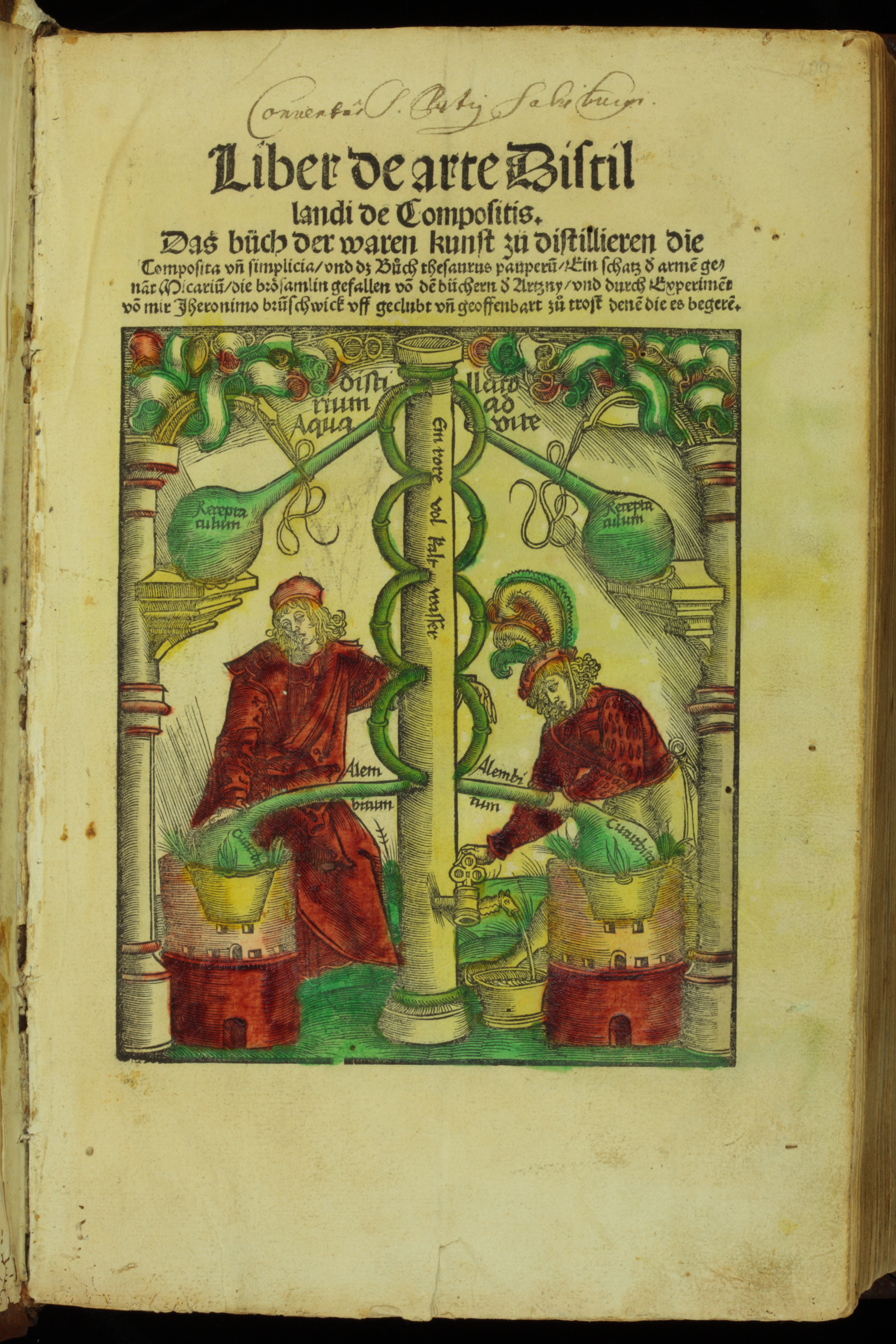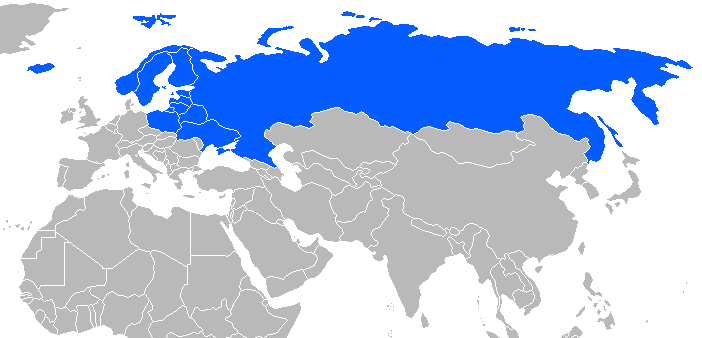|
Spirit Of Wine
''Aqua vitae'' (Latin for "water of life") or aqua vita is an archaic name for a strong aqueous solution of ethanol. These terms could also be applied to weak ethanol without rectification. Usage was widespread during the Middle Ages and the Renaissance, although its origin is likely much earlier. This Latin term appears in a wide array of dialectical forms throughout all lands and people conquered by ancient Rome. The term is a generic name for all types of distillates, and eventually came to refer specifically to distillates of alcoholic beverages (liquors). ''Aqua vitae'' was typically prepared by distilling wine and in English texts was also called ardent spirits, spirit of wine, or spirits of wine, a name that could be applied to brandy that had been repeatedly distilled. The term was used by the 14th-century alchemist John of Rupescissa, who believed the then newly discovered substance of ethanol to be an imperishable and life-giving "fifth essence" or '' quintessenc ... [...More Info...] [...Related Items...] OR: [Wikipedia] [Google] [Baidu] |
Hieronymus Brunschwig Liber De Arte Distillandi CHF AQ13x3
Hieronymus, in English pronounced or , is the Latin form of the Ancient Greek name (Hierṓnymos), meaning "with a sacred name". It corresponds to the English given name Jerome (given name), Jerome. Variants * Albanian language, Albanian: Jeronimi * Arabic language, Arabic: جيروم (Jerome) * Basque language, Basque: Jeronimo * Belarusian language, Belarusian: Еранім (Yeranim) * Bulgarian language, Bulgarian: Йероним (Yeronim) * Catalan language, Catalan: Jeroni * Written Chinese: 希罗尼穆斯 ** Pinyin, Chinese Pinyin: xī luó ní mù sī * Croatian language, Croatian: Jeronim (other), Jeronim * Czech language, Czech: Jeroným, Jeronýmus (archaic) * Danish language, Danish: Hieronymus * Dutch language, Dutch: Hiëronymus, Jeroen * English language, English: Jerome (other), Jerome, Hieronymus, Geromy, Rhonemus, Geronimo * Esperanto: Hieronimo * Estonian language, Estonian: Hieronymus * Finnish language, Finnish: Hieronymus * Flemish dialects, ... [...More Info...] [...Related Items...] OR: [Wikipedia] [Google] [Baidu] |
Distilled Spirit
Liquor ( , sometimes hard liquor), spirits, distilled spirits, or spiritous liquor are alcoholic drinks produced by the distillation of grains, fruits, vegetables, or sugar that have already gone through alcoholic fermentation. While the word ''liquor'' ordinarily refers to distilled alcoholic spirits rather than drinks produced by fermentation alone, it can sometimes be used more broadly to refer to any alcoholic beverage (or even non-alcoholic ones produced by distillation or some other practices, such as the brewed liquor of a tea). The distillation process concentrates the alcohol, the resulting condensate has an increased alcohol by volume. As liquors contain significantly more alcohol (ethanol) than other alcoholic drinks, they are considered "harder". In North America, the term ''hard liquor'' is sometimes used to distinguish distilled alcoholic drinks from non-distilled ones, whereas the term ''spirits'' is more commonly used in the United Kingdom. Some examples of ... [...More Info...] [...Related Items...] OR: [Wikipedia] [Google] [Baidu] |
Vodka
Vodka ( ; is a clear distilled beverage, distilled alcoholic beverage. Its varieties originated in Poland and Russia. Vodka is composed mainly of water and ethanol but sometimes with traces of impurities and flavourings. Traditionally, it is made by distilling liquid from Fermentation in food processing, fermented cereal, cereal grains and potatoes since the latter was introduced in Europe in the 18th century. Some modern brands use maize, Sugarcane, sugar cane, fruits, fruit, honey, and Maple syrup, maple sap as the base. Since the 1890s, standard vodkas have been 40% alcohol by volume (ABV) (80 U.S. proof). The European Union has established a minimum alcohol content of 37.5% for vodka. Vodka in the United States must have a minimum alcohol content of 40%. Vodka is traditionally drunk "Bartending terminology, neat" (not mixed with water, ice, or other Mixer drink, mixers), and it is often served freezer chilled in the Alcohol belts of Europe#Vodka belt, vodka belt of Belaru ... [...More Info...] [...Related Items...] OR: [Wikipedia] [Google] [Baidu] |
History Of Ethanol
Ethanol (also called ethyl alcohol, grain alcohol, drinking alcohol, or simply alcohol) is an organic compound with the chemical formula . It is an alcohol, with its formula also written as , or EtOH, where Et is the pseudoelement symbol for ethyl. Ethanol is a volatile, flammable, colorless liquid with a characteristic wine-like odor and pungent taste. As a psychoactive depressant, it is the active ingredient in alcoholic beverages, and the second most consumed drug globally behind caffeine. Ethanol is naturally produced by the fermentation process of sugars by yeasts or via petrochemical processes such as ethylene hydration. Historically it was used as a general anesthetic, and has modern medical applications as an antiseptic, disinfectant, solvent for some medications, and antidote for methanol poisoning and ethylene glycol poisoning. It is used as a chemical solvent and in the Chemical synthesis, synthesis of organic compounds, and as a Alcohol fuel, fuel source for la ... [...More Info...] [...Related Items...] OR: [Wikipedia] [Google] [Baidu] |
Aqua Regia
Aqua regia (; from Latin, "regal water" or "royal water") is a mixture of nitric acid and hydrochloric acid, optimally in a molar concentration, molar ratio of 1:3. Aqua regia is a fuming liquid. Freshly prepared aqua regia is colorless, but it turns yellow, orange, or red within seconds from the formation of nitrosyl chloride and nitrogen dioxide. It was so named by alchemy, alchemists because it can dissolve noble metals such as gold and platinum, though not all metals. Preparation and decomposition Upon mixing of concentrated hydrochloric acid and concentrated nitric acid, chemical reactions occur. These reactions result in the volatile products nitrosyl chloride and chlorine gas: : as evidenced by the fuming nature and characteristic yellow color of aqua regia. As the volatile products escape from solution, aqua regia loses its potency. Nitrosyl chloride (NOCl) can further decompose into nitric oxide (NO) and elemental chlorine (): : This dissociation is equilibrium ... [...More Info...] [...Related Items...] OR: [Wikipedia] [Google] [Baidu] |
Aqua Fortis
Nitric acid is an inorganic compound with the formula . It is a highly corrosive mineral acid. The compound is colorless, but samples tend to acquire a yellow cast over time due to decomposition into oxides of nitrogen. Most commercially available nitric acid has a concentration of 68% in water. When the solution contains more than 86% , it is referred to as ''fuming nitric acid''. Depending on the amount of nitrogen dioxide present, fuming nitric acid is further characterized as red fuming nitric acid at concentrations above 86%, or white fuming nitric acid at concentrations above 95%. Nitric acid is the primary reagent used for nitration – the addition of a nitro group, typically to an organic molecule. While some resulting nitro compounds are shock- and thermally-sensitive explosives, a few are stable enough to be used in munitions and demolition, while others are still more stable and used as synthetic dyes and medicines (e.g. metronidazole). Nitric acid is also commonly ... [...More Info...] [...Related Items...] OR: [Wikipedia] [Google] [Baidu] |
Alchemy
Alchemy (from the Arabic word , ) is an ancient branch of natural philosophy, a philosophical and protoscientific tradition that was historically practised in China, India, the Muslim world, and Europe. In its Western form, alchemy is first attested in a number of pseudepigraphical texts written in Greco-Roman Egypt during the first few centuries AD.. Greek-speaking alchemists often referred to their craft as "the Art" (τέχνη) or "Knowledge" (ἐπιστήμη), and it was often characterised as mystic (μυστική), sacred (ἱɛρά), or divine (θɛíα). Alchemists attempted to purify, mature, and perfect certain materials. Common aims were chrysopoeia, the transmutation of " base metals" (e.g., lead) into "noble metals" (particularly gold); the creation of an elixir of immortality; and the creation of panaceas able to cure any disease. The perfection of the human body and soul was thought to result from the alchemical ''magnum opus'' ("Great Work"). The ... [...More Info...] [...Related Items...] OR: [Wikipedia] [Google] [Baidu] |
Akvavit
''Akvavit'' or ''aquavit'' () is a distilled spirit that is principally produced in Scandinavia, where it has been produced since the 15th century. ''Akvavit'' is distilled from grain or potatoes and is flavoured with a variety of spices and herbs. It is also popular in Northern Germany. ''Akvavit'' gets its distinctive flavour from spices and herbs, and the dominant flavour must (according to the European Union) come from a distillate of caraway and/or dill seed. It typically contains 40% alcohol by volume, or 80 proof (U.S.). The EU has established a minimum of 37.5% ABV for ''akvavit'' to be named as such. Etymology The word ''aquavit'' derives from the Latin '' aqua vitae'', "water of life." Compare the words '' whisky'' and ''whiskey'', from Gaelic ''uisce beatha'', which has the same meaning. Likewise, clear fruit brandy is called '' eau de vie'' ( French for "water of life"). Drinking culture Akvavit is an important part of Nordic drinking culture, where it is of ... [...More Info...] [...Related Items...] OR: [Wikipedia] [Google] [Baidu] |
Eau De Vie
An ''eau de vie'' ( French for spirit, §16, §17 ) is a clear, colourless fruit brandy that is produced by means of fermentation and double distillation. The fruit flavor is typically very light. In English-speaking countries, ''eau de vie'' refers to a distilled beverage made from fruit other than grapes. Similar terms may be local translations or may specify the fruit used to produce it. Although ''eau de vie'' is a French term, similar beverages are produced in other countries (e.g., German ''Schnaps'', Greek '' ούζο'', Turkish '' rakı'', Balkan ''rakia'', Romanian '' țuică'', Czech and Slovak ''pálenka'', Hungarian '' pálinka'', and Sri Lankan coconut ''arrack''). In French, however, ''eau de vie'' is a generic term for distilled spirits. The proper French term for fruit brandy is ''eau-de-vie de fruit'', while ''eau-de-vie de vin'' means wine spirit (brandy), and several further categories of spirits (distilled from grape pomace, lees of wine, beer, cereal ... [...More Info...] [...Related Items...] OR: [Wikipedia] [Google] [Baidu] |
Uisce Beatha
(), literally "water of life", is the name for whiskey in Irish. It is derived from the Old Irish ''uisce'' ("water") and ''bethu'' ("life"). The Scottish equivalent is rendered ''uisge beatha''. Early forms of the word in English included uskebeaghe (1581), usquebaugh (1610), usquebath (1621), and usquebae (1715). The word "whiskey" (as spelt in Ireland and the United States) or "whisky" (the typical spelling in the rest of the world) is simply an anglicized version of this phrase, stemming from a mispronunciation of either ''uisce'' in Ireland or ''uisge'' in Scotland. According to the Whiskey Museum in Dublin, the different spelling began as a marketing decision which started a trend soon followed by other companies; the extra "e" was regardless a late addition, and does not appear in the 1879 book ''The Truths About Whisky'', which was published by the four biggest Dublin distillers. This development may in turn have influenced the modern Irish word ''fuisce'' ("whiskey"). The ... [...More Info...] [...Related Items...] OR: [Wikipedia] [Google] [Baidu] |
Irish Language
Irish (Standard Irish: ), also known as Irish Gaelic or simply Gaelic ( ), is a Celtic language of the Indo-European language family. It is a member of the Goidelic languages of the Insular Celtic sub branch of the family and is indigenous language, indigenous to the island of Ireland. It was the majority of the population's first language until the 19th century, when English (language), English gradually became dominant, particularly in the last decades of the century, in what is sometimes characterised as a result of linguistic imperialism. Today, Irish is still commonly spoken as a first language in Ireland's Gaeltacht regions, in which 2% of Ireland's population lived in 2022. The total number of people (aged 3 and over) in Ireland who declared they could speak Irish in April 2022 was 1,873,997, representing 40% of respondents, but of these, 472,887 said they never spoke it and a further 551,993 said they only spoke it within the education system. Linguistic analyses o ... [...More Info...] [...Related Items...] OR: [Wikipedia] [Google] [Baidu] |








